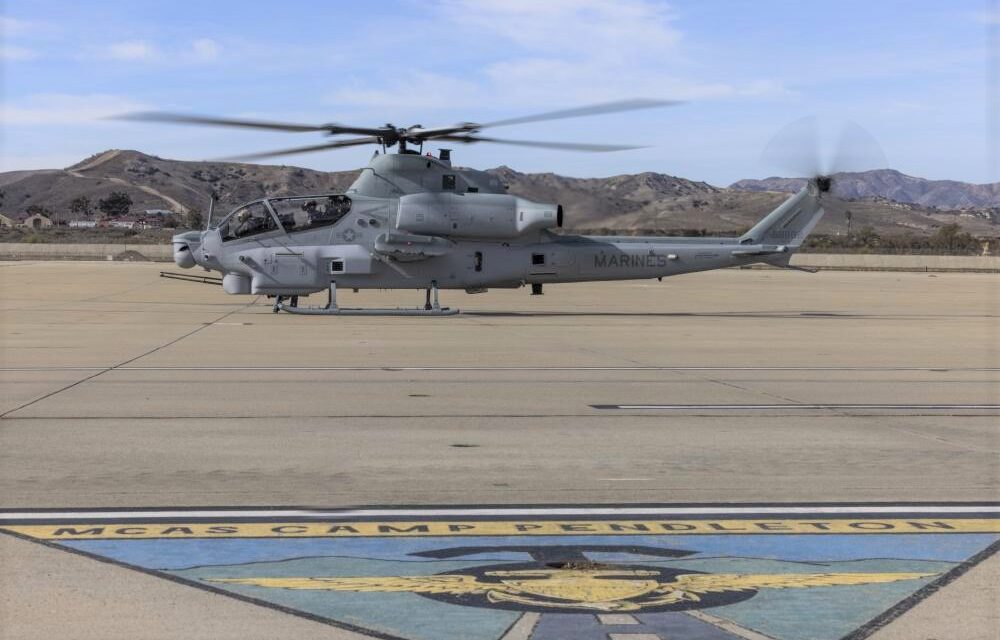
By SDCN Staff
Marine Corps Air Station Camp Pendleton, CA–The 189th and final AH-1Z Viper aircraft of the U.S. Marine Corps Program of Record was delivered from Bell to the U.S. Marine Corps on November 4, base officials said.
Col. Nathan “MOG” Marvel, commanding officer of Marine Aircraft Group 39, flew the Viper from Bell in Amarillo, Texas to the receiving unit, Marine Light Attack Helicopter Training Squadron (HMLAT) 303, where a short reception acknowledging the historic moment that ensued.
“The completion of the H-1 Program of Record delivery is a momentous event for Marine Aviation,” Marvel said. “By no means is this the end of an era – it is the next chapter in the great legacy of the H-1 and the U.S. Marine Corps.”
The AH-1Z Viper is a twin-engine attack helicopter featuring a four-blade, bearingless, composite main rotor system with armament including the M197 Gatling gun, 70-millimeter rockets, and air-to-air and air-to-surface missiles, including the latest AGM-179 Joint Air-to-Ground Missile (JAGM). The UH-1Y Venom is a twin-engine medium size utility helicopter with armament including 70-millimeter rockets and mounts for a variety of machine guns.
“Today’s H-1s are far more lethal, survivable, and sustainable than their predecessors. They bring capability and capacity to the battle space that no other platform can provide,” Marvel noted. “These aircraft build on combat-proven tasks such as Offensive Air Support and Assault Support but also have demonstrated the ability to conduct sea control and sea denial operations. They are proven kill chain enablers and effecters.”
Bell completed the UH-1Y Venom POR of 160 aircraft in 2018, bringing the combined H-1 POR to 349 aircraft. The U.S. Marine Corps ordered its first lot of H-1s in 1962, and the program evolved in the six decades following. Since the first delivery of the AH-1Z and UH-1Y to the U.S. Marines, the H-1 mixed fleet has accumulated more than 450,000 flight hours through a full spectrum of military operations. Bell will continue to support the U.S. H-1s with lethality, survivability, and reliability upgrades through a long-term modernization plan that helps ensure the aircraft keep an overwhelming tactical advantage for generations.
The H-1 production line is still active in support of foreign military sales to approved U.S. allies, including the Kingdom of Bahrain and the Czech Republic.



